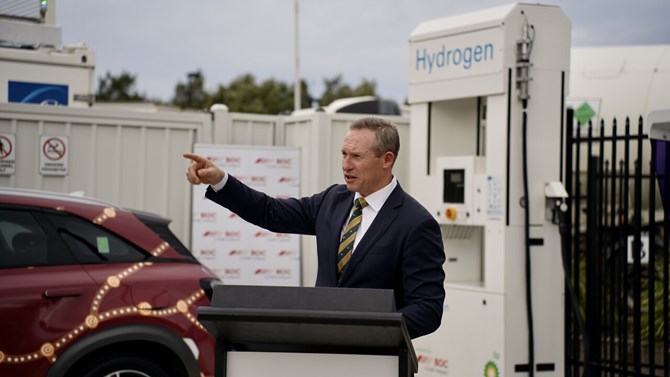What is renewable energy?
Energy is renewable when it comes from a natural resource that is easily replaced and never runs out. In Queensland our renewable energy is generated by:
Wind energy
We can efficiently use energy from the wind to create electricity, or wind energy. A wind farm is a collection of wind turbines that work together to generate electricity. This electricity is then transported into the grid or is stored in a large-scale battery.
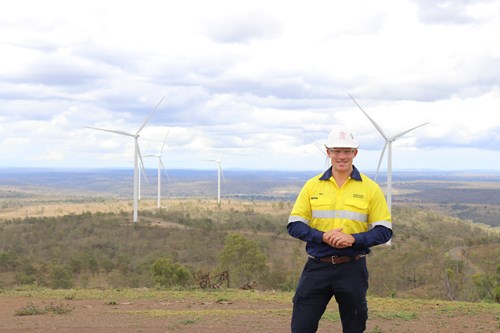
How wind energy works
Wind energy is kinetic (motion) energy that rotates wind turbine blades, which are connected to an internal rotor. As the blades spin so does the rotor, creating mechanical energy that is converted into electricity.
Wind energy efficiency
Wind turbines have come a long way in terms of efficiency. Both the height and shape of the blades are designed to maximise the wind each turbine harnesses. Each modern turbine converts around 50% of the wind’s kinetic energy into electricity.
The cost of wind energy has on average been decreasing over recent years. Today, wind energy is one of the most affordable electricity sources, often rivalling or even undercutting fossil fuels.
Wind farms in Queensland
There are already several wind farms perched on hilltops across the state, including in the Darling Downs, South West Queensland, Far North Queensland and North Queensland regions with more on the way.
Solar energy
Solar energy refers to light and heat radiating from the sun. When this energy is captured, it can be converted into electricity or used to heat air or water. Most solar energy is converted into electricity and used to help power the grid. A large collection of solar panels producing electricity is called a solar farm.
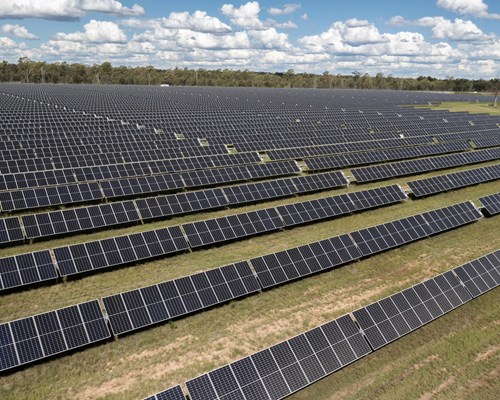
How solar works
There are 2 main types of technology used to generate energy: solar thermal and solar photovoltaic. Solar photovoltaic (also known as solar PV) is the most used technology in Queensland.
Typical solar PV cells are covered in glass and protected by aluminium frames. This is called a solar panel. The panels on these cells can convert sunlight directly into electricity. Technology is improving, with flexible solar PV roof tiles now available and solar paint being developed.
Solar energy efficiency and reliability
The efficiency of solar PV (how much solar energy is converted into electricity) depends on the type of cells. Monocrystalline cells and polycrystalline cells are very efficient.
Solar PV output depends on a number of factors including location, size and installation. Solar panels are generally reliable and are low maintenance as they have no internal moving parts.
The importance of rooftop solar
Small-scale rooftop solar is playing a key role in Queensland’s energy transformation. More than 790,000 homes and small businesses have rooftop solar. The collective power of small-scale solar is important in helping us reach our renewable energy targets. Learn more about installing solar in your home.
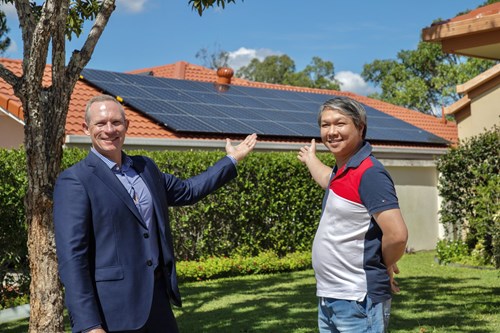
Solar recycling
Thousands of solar panels on Queensland homes, businesses and solar farms will now be recycled at end-of-life and reused for parts, thanks to a nation-leading multi-million dollar investment by the Miles Government.
Almost $5.5 million of funding has today been announced to advance a solar panel recycling pilot and guide better practice in the renewable energy sector by improving industry engagement with communities.
The funds, of which $2.5 million is dedicated to ensuring residential solar panels can avoid landfill and are re-purposed for parts, will enhance the opportunities for regional Queensland communities to directly benefit from renewable energy solutions.
The solar panel recovery pilot will also collect valuable information to help inform the development of a national product stewardship scheme, helping to identify any gaps in Queensland’s recovery and processing capacities.
Solar farms and grazing livestock
Solar farms are ideally set up on land that has lower ecological and agricultural value. Land that is more compatible for solar is often less compatible for farming. However, there are many solar farms being trialed on agricultural land across Australia . In some cases, grazing livestock and solar farms may be a good match and successful trials are underway with sheep grazing.
Storage of Excess Renewable Energy
Excess renewable energy is stored so it can be used by the grid when needed. Secondary generation technologies, like batteries, are what’s used to store the energy. Energy storage technologies relevant to Queensland include:
Pumped hydro energy storage
Pumped hydro moves water between 2 or more reservoirs to store and generate energy
As part of our future energy system, pumped hydro is a technology used to store renewable energy made by wind and solar farms. It operates in a similar way to a rechargeable battery. Stored energy can be released to our electricity grid when needed.
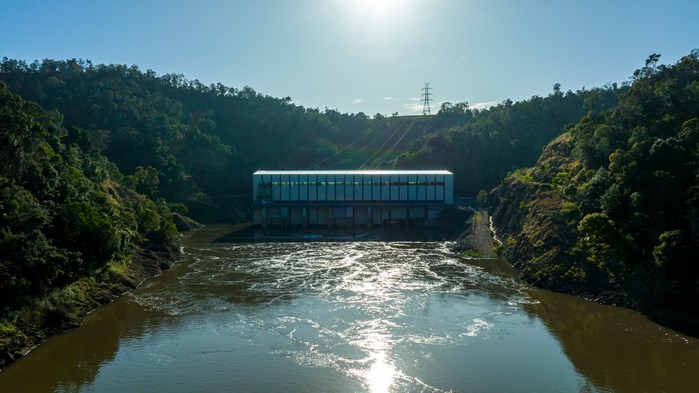
How pumped hydro works
A power station houses turbines that are linked to 2 or more reservoirs at different heights.
When electricity demand is high, water is released from the upper reservoir and the force of the falling water spins the turbines. When the turbines spin, electricity is generated and fed into the grid.
Water that passes through the turbines is kept in the lower reservoir until it can be pumped back. When there is excess electricity supply in the grid, the turbines use this excess energy to pump water from the lower reservoir back to the upper reservoir.
This process is usually repeated every 24 hours to help maintain the security and reliability of the electricity grid.
Why pumped hydro is important
Queensland needs large-scale energy storage to make sure there is always a supply of electricity. When the sun isn’t shining and the wind isn’t blowing, or when there is high electricity demand, pumped hydro is switched on to provide the needed power. The energy storage provided by pumped hydro is an important part of our future energy system.
Planned pumped hydro projects
There are 2 long duration pumped hydro projects planned for Queensland:
Together, these projects have the potential to store up to 7 gigawatts (GW) of electricity. This is enough energy to power the whole of Queensland for a day before needing to be recharged.
They will create local jobs and support the transformation of our energy system.
Pumped hydro's efficiency
Pumped hydro has been used to create and store energy around the world for generations. It is used for 97% of energy storage worldwide because it is flexible and low-cost to operate. Pumped hydro schemes are considered a very efficient way to generate and store energy.
Battery storage
Batteries are a great long-term strategy for storing surplus energy to keep our electricity supply stable.
There are many kinds of batteries to store large amounts of energy for our grid, the most common being lithium-ion. They are already in products like smartphones, laptops and electric cars.
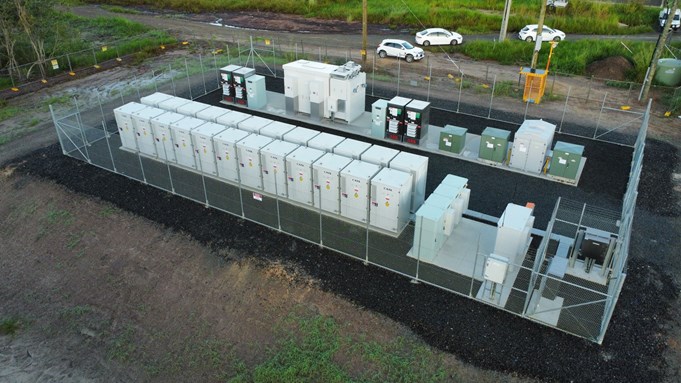
How large-scale batteries work in Queensland
Batteries use chemicals to absorb and release energy on demand. Large batteries within our energy system are typically charged in the middle of the day, as this is when most renewable electricity is created and there is a lower demand for it in our homes.
We need batteries attached to our grid to store excess energy. This ensures no renewable energies go to waste and allows the release of additional energy as generally required during peak periods.
The reliability of large-scale batteries
Batteries are a flexible and reliable form of energy storage. The large batteries backing up our energy system can respond faster than other storage technologies. With a flick of a switch, these batteries can keep the supply stable and help avoid blackouts.
Making batteries in Queensland
Queensland has many of the critical minerals needed in battery manufacturing. We also have the mining expertise, and skilled workers to refine and produce the necessary advanced materials.
From here, we have a growing industry that is ready to manufacture, pack, assemble, and then install them, as well as businesses working to recycle their parts at the end of their lifespan.
This means Queensland is well-placed to not only manufacture large-scale batteries for our own use, but also build a larger industry that can export this essential clean energy technology nationally and globally. Read more about where Queensland’s growing battery industry is at and the available opportunities for industry.
Energy Queensland's network batteries
Energy Queensland (EQL) is helping to power Queensland’s energy transformation through delivery of their Local Network Battery Plan.
They're installing batteries across the state in partnership with Ergon Network (regional Queensland’s electricity network provider) to capture extra energy generated through household solar.
With more than 800,000 Queensland households generating solar energy at any point in time, network batteries provide a way for us to store any extra energy locally, so we can supply it later when electricity demand is high. This means use of more clean energy and assists us to provide a secure and reliable electricity supply.
Local network connected batteries
EQL's local network connected batteries store excess energy produced by local rooftop solar generation.
They’re connected to our High Voltage electricity network. Each one is a large 4MW/8MWh battery allowing more solar energy to be sent into the grid while the sun is shining, storing it locally for use locally when electricity demand is high.
In South East Queensland, they're preparing to install these local connected batteries in a number of locations including Raby Bay, Bribie Island and Morayfield over the next two years, with more to come.
This rollout follows Ergon Network’s successful installation of our Stage 1 batteries in Townsville, Toowoomba, Yeppoon, Bundaberg and Hervey Bay over the last 12 months, and more are being planned for Stage 3.
See more of their battery locations across Queensland.
Neighbourhood batteries
Neighbourhood batteries are connected to the electricity network within local suburbs and neighbourhoods.
EQL is currently running a neighbourhood battery trial in Ipswich in partnership with retailer Origin Energy to help us understand more how this type of energy storage works to benefit local communities.
As part of this trial, they're connecting up to 30 batteries on our power poles and 5 ground mounted batteries connected to the low voltage electricity network in suburbs across Ipswich in Raceview, Goodna, Flinders View, Silkstone, Bellbird Park and Redbank Plains.
The pole mounted batteries are 30kW/ 60kWh in capacity.
See their neighbourhood battery locations in South East Queensland.
Community batteries
In partnership with Ergon Network (regional Queensland’s electricity network provider), EQL is connecting 90kW/180kWh ground-mounted community batteries to the local electricity network in 12 different communities across Queensland.
This project is being funded through the Australian Government’s Community Batteries for Household Solar Program.
They're installing local community batteries in a number of locations across South East Queensland including:
- Caloundra (Sunshine Coast)
- Caboolture, Kallangur, Griffin (Moreton Bay)
- The Gap, Nundah, Newmarket, Coorparoo (Brisbane)
- Birkdale (Redlands)
- Pimpama (Gold Coast).
See more of their community battery locations across Queensland.
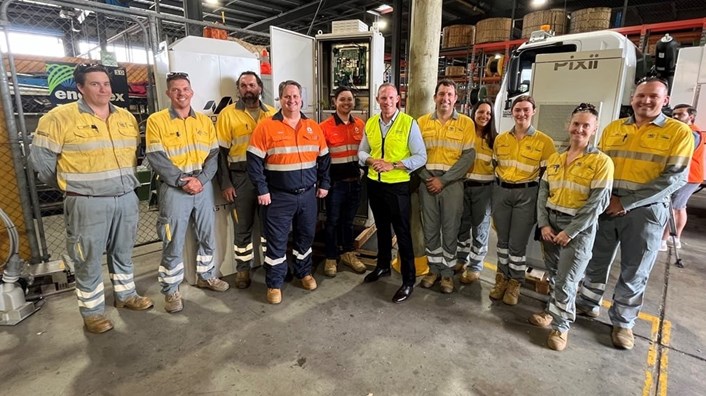
Hydrogen
Hydrogen is the most abundant element in the universe and is used to store and deliver energy. Traditionally, the process used to make hydrogen has been reliant on vast amounts of fossil fuels.
Today, we are moving away from grey and blue hydrogen (produced using very hot steam from fossil fuels) to renewable hydrogen (produced using renewable energy). Applications for renewable hydrogen include:
- fuelling transport
- making industrial chemicals
- providing industrial heat and power for mining and metals production
- storing and providing power.
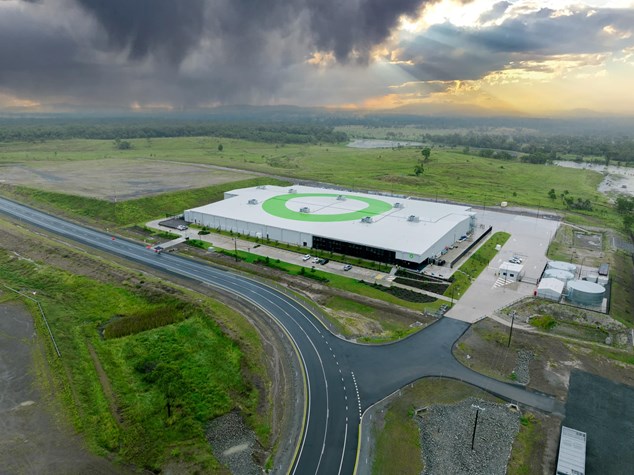
Where renewable hydrogen comes from
Renewable hydrogen is produced by a process called electrolyses. Renewable electricity, sourced from wind, solar or biomass, powers the electrolyses process that splits hydrogen from water. Hydrogen is used as a carrier, storing energy which can be converted into electricity or heat.
Hydrogen as a clean energy source
One of the main advantages of renewable hydrogen is that it is considered a clean energy source. Unlike fossil fuels, which emit pollutants and greenhouse gases, hydrogen only produces water vapour when used as fuel in fuel cells.
Hydrogen's safety
Hydrogen is as safe as many of the fuels we currently rely on.
Hydrogen has been safely produced, stored, and moved around the world for several decades, mostly in the petroleum processing and fertilizer sectors, but also in food production, the space industry, and in industrial chemicals and metals.
There are existing standards in place to produce, store, transport and use hydrogen safely.
Hydrogen powered cars are no longer just a thing of the future
They might not be flying cars or hyperloops but hydrogen-powered cars, which were once a ‘thing of the future’, are now a reality on some Queensland roads and playing a part in the race towards net zero emissions.
By the late 2000s hydrogen cars were launched into the global market and in August 2021 the first hydrogen-powered cars hit Queensland roads as part of the state government’s fleet.
There’s a lot of interest in hydrogen cars and rightfully so – their only emission is water. But it might be a while yet until you are able to pop down to a car dealership and purchase your first hydrogen-powered car.
The Queensland Government is already planning to ensure we have the infrastructure in place to get you from A to B. Queensland company, H2H Energy, has already built the state’s first hydrogen bowser in the Redlands.
